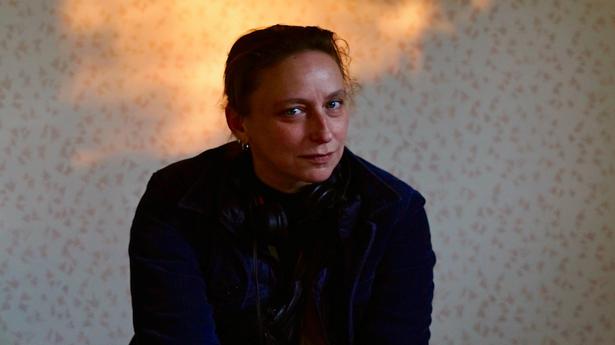
How Céline Sciamma made the perfect pandemic film
The Hindu
The celebrated French director talks about ‘Petite Maman’ — up for a gong at next month’s BAFTA Film Awards — and why she wrote it for both adults and children. The movie is available to stream on Mubi today
What does Portrait of a Lady on Fire, Cannes Film Festival winner and arguably 2019’s most erotic film, have in common with the more recent Petite Maman, featuring two children and a tree house? The concept of political equality, says French auteur, Céline Sciamma, who directed both. The former, about two women in 18th century France falling in love, made Sciamma, 43, a household name in the international film community. Meanwhile, Petite Maman sees eight-year-old Nelly coping with the loss of her grandmother through an encounter with her mother, Marion, now a child too. “The film was dealing with elders dying, us not being able to say goodbye, kids experiencing loss,” begins Sciamma, on a video call, adding that this reflection of lockdown reality could be a coincidence or just “magical”.
The idea of the film came to her in 2017, before Portrait of a Lady on Fire. “I didn’t change anything but the film suddenly felt charged with everything happening around us,’’ she continues, moving her hands expressively. In an interview with British digital magazine, Screen Daily, Sciamma had said, “This was the first time that I had a film I thought was perfect for public TV — short, for kids as well as adults”. Petite Maman has been filmed at Nelly’s eye-level and in earlier interviews the director has referenced Japanese animators Hayao Miyazaki and Mamoru Hosoda. Sciamma, who does her own costume design, and has inspired her Portrait actor, Noémie Merlant to turn director as well, is one of the most important feminist directors in international cinema today. She takes us on her journey:
I ideated the film years ago, when I was writing Portrait. The simple idea of a kid meeting her mother at the same age popped into my mind and it felt peaceful. But it also felt troubling. I built on this idea for years and when I wrote it, and the pandemic happened, the politics of the film was suddenly enlightened in a new way. The pandemic made me go faster. I felt the film was even more meaningful, and that it would be great to put it in cinemas once they opened. That’s why we went to the Berlin Film Festival (2021). Maybe it’s magic but the film hits you very hard, very quick, emotionally. It also tries to subvert the idea we have of family.
It usually takes me one or two weeks to write a film because I have been building it for so long in my mind. I write organically from the first scene to the last and spend a lot of time thinking about the first scene. You should start the film with a scene you adore. Because it’s the only thing you are going to see from your film for the rest of your life (laughs). Petite Maman was shot in my hometown (Cergy, about 30 km from Paris) and we’d have lunch at my kindergarten school. Basically I was having cigarette breaks at the very place I frequented as a three-year-old. All of this felt like the film itself. When you are trying to build an imaginary path, it is easier to do it in a place you know very well.
I wanted autumn and I wanted Claire Mathon to express her genius with a different range of colours. She was as obsessed as me with the film, not just with the lighting of the frame. We had loads of leaves of different colours brought in from other forests because ours was really green. There is a fairytale element to the forest but it is also democratic in nature. The forest has that scale of being very impressive but also showing the kid’s loneliness in a very poetic way.
“[’Petite Maman’] felt like the same political project as ‘Portrait of a Lady on Fire’, which gives two characters the time to know and love each other, out of society, and they have this very short time of reinventing themselves and going on with their life”Céline Sciamma
The house was built in the studio and was designed based on both my grandmothers’ houses. I united the two spaces, without trying to weigh the film down with personal details. I don’t have too many backstories about the family. It is mostly about building a relationship between you and the film. That said, the film might be my most personal yet, because it is dealing with collective memories. There is ‘time travelling’ but it is timeless. The house and the costumes would be a tribute to the last 50 years of French living. I wanted to build a common space in time, for that kid from the 50s or from today to have that playground.











